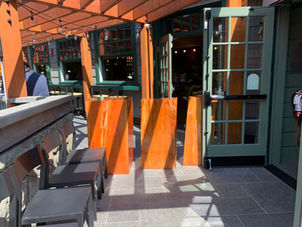

Local Lumber Making

Trees to Timber
To start off we need to bring the trees to the ground and trim the others around that are staying put. We work with great arborists will bring the trees to the ground, either whole or in pieces depending on location.
Once the trees have been fallen, branches will be gathered and chipped or put into a burn pile. Then we move the logs into place for the milling.
Keeping your logs longer saves time. If you're looking for 8' boards then keep the logs at 17', then two lengths can be milled at once and you'll cut your milling time in half.
Timber to Lumber
Having a cut list is a good start, but depending on your logs you might want to think down the road of some larger, more valuable cuts. Depending on the purpose of your lumber different angles from the center of the tree can be had to make stronger cuts and view a grain at various angles. Make sure not to over estimate your logs, and pick the straight ones because twists in the tree cause twists in your lumber.
Stacking the lumber and disposing of the scrap is an essential part to keep the milling steady. Trees breath when standing and they need to do the same once they're down. Having all sides of the cuts exposed to air is the best way for them to dry evenly and avoid cracking and twisting. Placing spacers between rows is the best way to stack. The space should be out of direct sunlight, and well ventilated.
If you're going to mill for structural builds the wood is going to have to be inspected and stamped by a licensed lumber grader. I have the contact for one and he charges a very fair rate. With my cuts I keep it first grade as much as possible. If you're in need of the maximum out of the timber some second grade cuts will come from the outer boards.

Services
Milling
Bandsaw milling will include the mill and operator. For best efficiency 1-2 people are required for basic labor of offloading scraps and lumber. If you're not able to help, a milling assistant can be provided. The milling assistant can take care of clean up as we go, removing and stacking lumber, moving the offcuts into the scrap pile, and cutting pieces into firewood.
If there is trimming, partially rotten logs, awkward sawing area, etc. we work on an hourly basis to be fair @ $125-$175/hour, minimum of 4 hours. If sawing the logs is all that's needed then we can do a board foot rate of 65 cents per board foot for cuts over 2 inches thick, and 75 cents per board foot for cuts under 2 inches.
If you have a smaller piece of work and would like it cut you can bring it to me and I will do the cuts at a minimum of $125.
Mobilization and accommodation fees vary depending on location from Nanaimo or Malcolm Island.








































